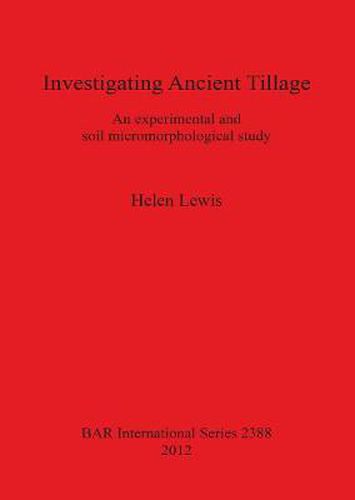Readings Newsletter
Become a Readings Member to make your shopping experience even easier.
Sign in or sign up for free!
You’re not far away from qualifying for FREE standard shipping within Australia
You’ve qualified for FREE standard shipping within Australia
The cart is loading…






This title is printed to order. This book may have been self-published. If so, we cannot guarantee the quality of the content. In the main most books will have gone through the editing process however some may not. We therefore suggest that you be aware of this before ordering this book. If in doubt check either the author or publisher’s details as we are unable to accept any returns unless they are faulty. Please contact us if you have any questions.
This volume presents a series of experimental investigations designed to explore the identification and characterisation of ancient arable farming through a feature-based morphology approach, and to assess previous work regarding the ability of soil micromorphological approaches to identify ancient tilled soils on the basis of profile and horizon characteristics. Studying ancient arable land use through soil micromorphology involves identifying remnant indicators of the processes and activities involved in cultivation in thin section. Regarding ancient tillage, there are two major types of indicators which should be examined micromorphologically: profile or horizon characteristics associated with the impact of cultivation on the soil, and the characteristics of macroscopic tillage features themselves. Much primary research has focused on the former, although the latter may prove to be both the least ambiguous, and of the most use in relating microscopic indicators to macroscopic archaeological features. This volume discusses experimental study of both of these aspects, in comparison to archaeological remains, and presents a feature morphology-based approach to the study of ancient arable land use.
$9.00 standard shipping within Australia
FREE standard shipping within Australia for orders over $100.00
Express & International shipping calculated at checkout
Stock availability can be subject to change without notice. We recommend calling the shop or contacting our online team to check availability of low stock items. Please see our Shopping Online page for more details.
This title is printed to order. This book may have been self-published. If so, we cannot guarantee the quality of the content. In the main most books will have gone through the editing process however some may not. We therefore suggest that you be aware of this before ordering this book. If in doubt check either the author or publisher’s details as we are unable to accept any returns unless they are faulty. Please contact us if you have any questions.
This volume presents a series of experimental investigations designed to explore the identification and characterisation of ancient arable farming through a feature-based morphology approach, and to assess previous work regarding the ability of soil micromorphological approaches to identify ancient tilled soils on the basis of profile and horizon characteristics. Studying ancient arable land use through soil micromorphology involves identifying remnant indicators of the processes and activities involved in cultivation in thin section. Regarding ancient tillage, there are two major types of indicators which should be examined micromorphologically: profile or horizon characteristics associated with the impact of cultivation on the soil, and the characteristics of macroscopic tillage features themselves. Much primary research has focused on the former, although the latter may prove to be both the least ambiguous, and of the most use in relating microscopic indicators to macroscopic archaeological features. This volume discusses experimental study of both of these aspects, in comparison to archaeological remains, and presents a feature morphology-based approach to the study of ancient arable land use.